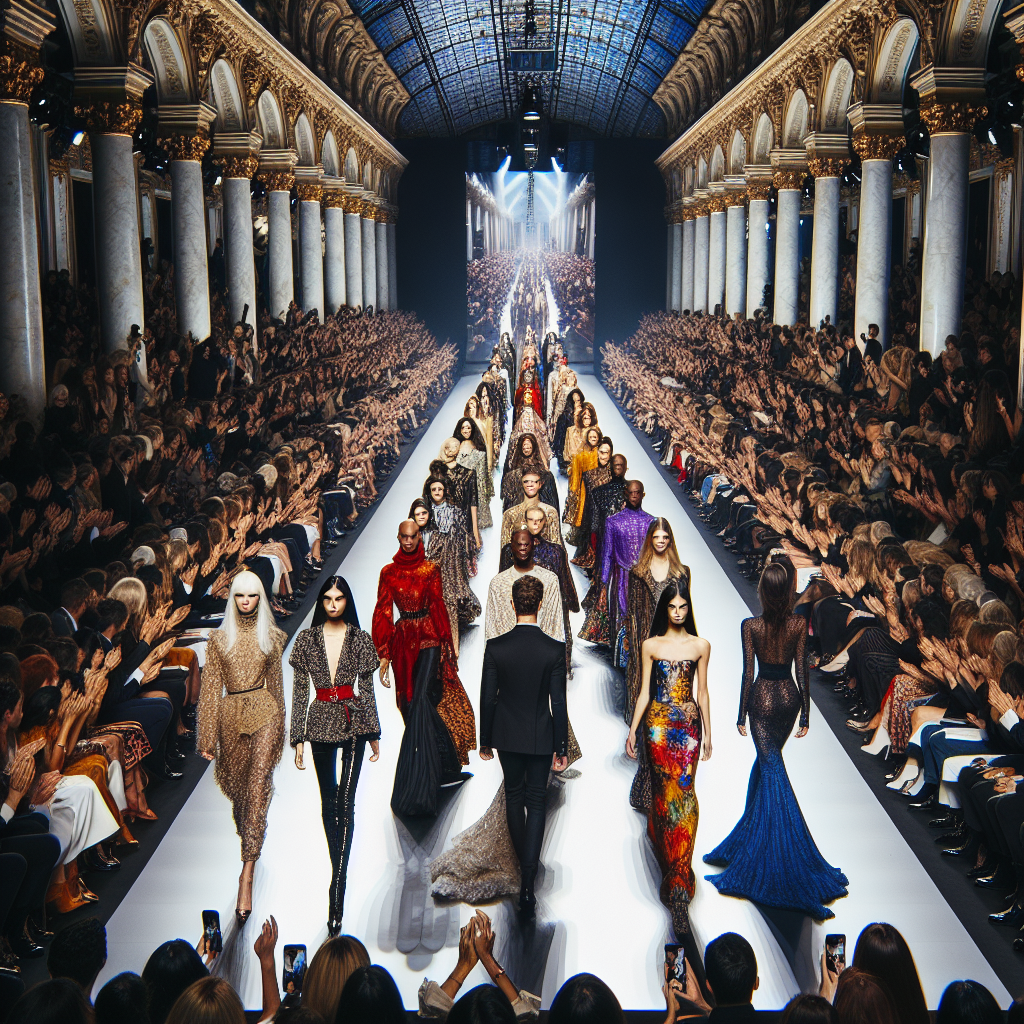The fashion industry has always been a realm of creativity and innovation, constantly evolving to reflect societal shifts and technological progress. In recent years, a fascinating trend has emerged within this dynamic landscape—the rise of digital fashion models. These virtual representations are redefining the boundaries of fashion, offering new possibilities and challenges. As technology continues to advance, digital fashion models are becoming increasingly prevalent, influencing not only how fashion is presented but also how it is perceived. This article delves into the emergence of digital fashion models, the technological advances driving this virtual trend, and the impacts on the fashion industry landscape.
The Emergence of Digital Fashion Models
The concept of digital fashion models has transitioned from a futuristic idea to a present-day reality. Initially appearing as mere digital avatars in video games and virtual worlds, these models have now entered the mainstream fashion industry. Designers and brands are increasingly utilizing digital models to showcase their collections, presenting a new form of artistic expression that challenges the traditional runway model paradigm. Unlike their human counterparts, digital models are not constrained by physical limitations, allowing designers to explore more avant-garde and imaginative concepts.
Digital fashion models have gained traction due to their versatility and adaptability. They can be customized to embody a wide range of body types, ethnicities, and styles, offering a more inclusive representation of beauty. This flexibility allows brands to connect with diverse audiences and reflect their values in a more profound way. Additionally, the use of digital models reduces logistical challenges associated with traditional fashion shows, such as travel, accommodation, and coordination of large teams.
Social media platforms have played a significant role in the emergence of digital fashion models. Virtual influencers like Lil Miquela and Shudu have amassed substantial followings, blurring the lines between reality and digital artistry. These virtual personalities engage with audiences, promote brands, and even participate in advertising campaigns, often with a level of engagement that rivals or surpasses human influencers. Their rise underscores the changing dynamics of how fashion is consumed and marketed in the digital age.
Moreover, the COVID-19 pandemic accelerated the adoption of digital fashion models as brands sought alternative ways to present their collections amid restrictions on physical gatherings. Virtual fashion shows and digital lookbooks became essential tools for maintaining brand visibility and engagement during the crisis. This shift not only demonstrated the viability of digital models but also highlighted their potential to transform the fashion industry permanently.
The emergence of digital fashion models also raises questions about authenticity and the role of technology in shaping our perception of beauty. While virtual models offer creative freedom and inclusivity, they also challenge traditional notions of authenticity and human connection. As the fashion industry continues to embrace these digital entities, it must grapple with finding a balance between innovation and maintaining a genuine connection with audiences.
In essence, the emergence of digital fashion models represents a significant shift in the fashion industry’s approach to creativity, representation, and engagement. As these virtual entities continue to evolve, they promise to reshape the way fashion is experienced and appreciated, offering a glimpse into a future where technology and artistry seamlessly intertwine.
Technological Advances Driving Virtual Trends
The rise of digital fashion models is fundamentally rooted in technological advancements that have transformed the creative process within the fashion industry. At the heart of this transformation is the development of sophisticated 3D modeling software, which allows designers to create hyper-realistic digital representations of clothing and accessories. These tools enable designers to experiment with textures, colors, and shapes in a virtual environment, pushing the boundaries of what is possible in fashion design.
Augmented reality (AR) and virtual reality (VR) technologies have also played a pivotal role in driving the virtual trend. These immersive technologies offer consumers an interactive experience, allowing them to visualize how garments would look and fit in a virtual space. Brands are leveraging AR and VR to create virtual fitting rooms and fashion shows, providing an engaging and personalized shopping experience. This technological shift not only enhances consumer interaction but also opens new avenues for marketing and brand storytelling.
Artificial intelligence (AI) has further accelerated the rise of digital fashion models. AI algorithms can analyze vast amounts of data to predict fashion trends, optimize designs, and even generate new styles. Machine learning techniques enable the creation of digital models with lifelike movements and expressions, enhancing their appeal and relatability. AI-driven personalization allows brands to tailor digital content to individual preferences, creating a more immersive and customized experience for consumers.
The integration of blockchain technology is another significant factor driving the virtual fashion trend. Blockchain offers a secure and transparent way to authenticate digital fashion items, ensuring their provenance and ownership. This technology is particularly relevant for digital fashion, where the uniqueness and originality of virtual garments can be easily compromised. By providing a digital certificate of authenticity, blockchain enhances the value and legitimacy of digital fashion models and their associated assets.
Cloud computing has facilitated the storage and processing of the vast amounts of data required to create and manage digital fashion models. With cloud-based platforms, designers can collaborate remotely, access powerful computational resources, and streamline the production process. This capability is crucial for scaling digital fashion initiatives and ensuring that virtual models can be deployed efficiently across various digital channels.
As technology continues to evolve, the potential for digital fashion models will only expand. Innovations such as haptic feedback, which simulates the sense of touch, and neural networks that mimic human creativity, promise to further blur the lines between the digital and physical worlds. These advances will not only enhance the realism and appeal of digital models but also redefine the creative possibilities within the fashion industry, setting the stage for a new era of virtual fashion.
Impacts on the Fashion Industry Landscape
The rise of digital fashion models is reshaping the fashion industry landscape in profound ways, influencing everything from design and marketing to sustainability and inclusivity. One of the most notable impacts is the democratization of fashion. Digital models allow emerging designers and small brands to showcase their creations without the need for expensive fashion shows or photoshoots, leveling the playing field and fostering creativity and innovation.
From a marketing perspective, digital fashion models offer brands new opportunities to engage with consumers. Virtual influencers and digital campaigns provide a novel way to reach audiences, particularly younger, tech-savvy demographics. Brands can create immersive and interactive experiences that capture consumer attention, fostering stronger brand loyalty and engagement. This shift towards digital marketing also enables brands to collect valuable data on consumer preferences and behaviors, informing future strategies and product development.
Sustainability is another crucial aspect where digital fashion models are making a significant impact. The fashion industry is notorious for its environmental footprint, with traditional production processes contributing to waste and pollution. Digital fashion offers a more sustainable alternative, reducing the need for physical samples and minimizing resource consumption. Virtual fashion shows eliminate the carbon footprint associated with travel and logistics, aligning with the growing consumer demand for eco-friendly practices.
Inclusivity and representation are also being transformed by digital fashion models. The ability to create diverse and customizable avatars allows brands to reflect a broader range of identities and body types. This inclusivity resonates with consumers who seek authentic representation in the fashion industry. Digital fashion models can challenge traditional beauty standards and promote a more inclusive definition of beauty, fostering a sense of belonging and empowerment among diverse audiences.
However, the rise of digital fashion models also presents challenges and ethical considerations. The use of digital avatars raises questions about the future of human models and the potential loss of jobs within the industry. Additionally, the authenticity and transparency of digital campaigns must be carefully managed to maintain consumer trust. As brands navigate these challenges, they must find a balance between embracing innovation and preserving the human element that is integral to fashion.
Ultimately, the impacts of digital fashion models on the fashion industry are multifaceted, offering both opportunities and challenges. As the industry continues to adapt to this digital revolution, it will need to embrace new ways of thinking and operating. The integration of digital fashion models into the fashion ecosystem is not just a trend but a fundamental shift that will shape the future of fashion, redefining how we create, consume, and experience fashion in the digital age.
The rise of digital fashion models marks a significant milestone in the evolution of the fashion industry. Driven by technological advances and changing consumer preferences, these virtual entities are redefining the boundaries of creativity, inclusivity, and sustainability. As digital fashion models continue to gain prominence, they offer a glimpse into a future where technology and fashion converge seamlessly. While challenges remain, the potential for innovation and transformation is immense. As the fashion industry navigates this digital revolution, it will need to embrace new possibilities and redefine its relationship with technology, ensuring that the future of fashion is both exciting and inclusive.










